This week’s Hammer of Math uses the power of geometry to look at exactly how difficult it is to legally deploy a fortification in Warhammer 40,000.

Fortifications have always been an interesting part of Warhammer 40,000. One would expect that in the grim darkness of the far future that battles would occur around essential points, and many a styrofoam packing piece has been painted gray and repurposed as a bunker to create one of said points. Over time Games Workshop began releasing plastic kits like the Imperial Bastion and Fortress of Redemption to represent fortified strongholds, and new building kits came with new rules. For the most part these have ranged from “incredibly important” in 7th edition to “likely to be used as regular line-of-sight blocking terrain” in terms of utility in games. Though we’ll always think back fondly on that brief moment in 8th Edition when Skyshield Landing Pads and Repulsor Executioners were good friends.
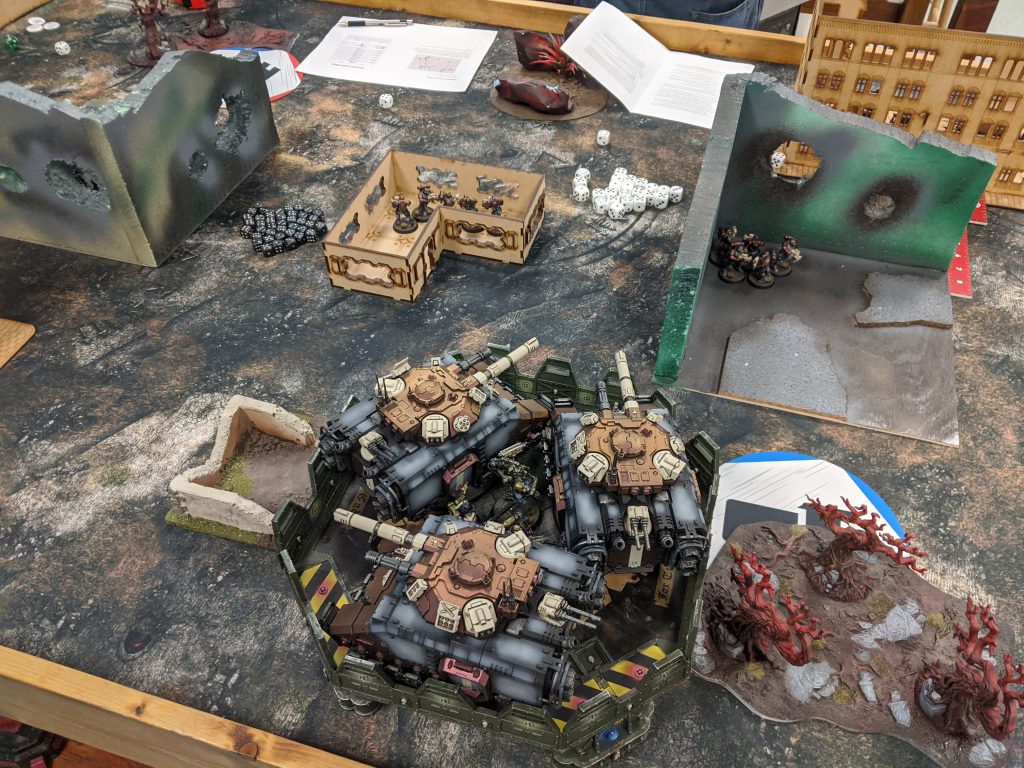
When 9th Edition released Games Workshop provided additional rules on how Fortifications could be used and deployed, specifically:
- Fortifications cannot control objective markers.
- Fortifications cannot be a Warlord.
- Unless otherwise stated, Fortifications cannot be set up within 3″ of any other terrain feature that is not part of its own datasheet (excluding hills).
- If a Fortification cannot be set up as a result, it cannot be deployed and counts as having been destroyed.
- Fortifications can never be placed into Strategic Reserves.
To be blunt, the rules on fortification deployment are incredibly harsh unless players have the flexibility to move terrain or they’re playing on Moon Base Klaisus. One of the challenges of quantifying exactly how difficult these can be is figuring out what Games Workshop considers an acceptable level of terrain. Outside of the most recent Frontline Gaming events (which used player-placed terrain), most tournaments use a fixed format, but it wasn’t until the GW Open that we had any kind of “official” declaration of what a competitive board should look like.
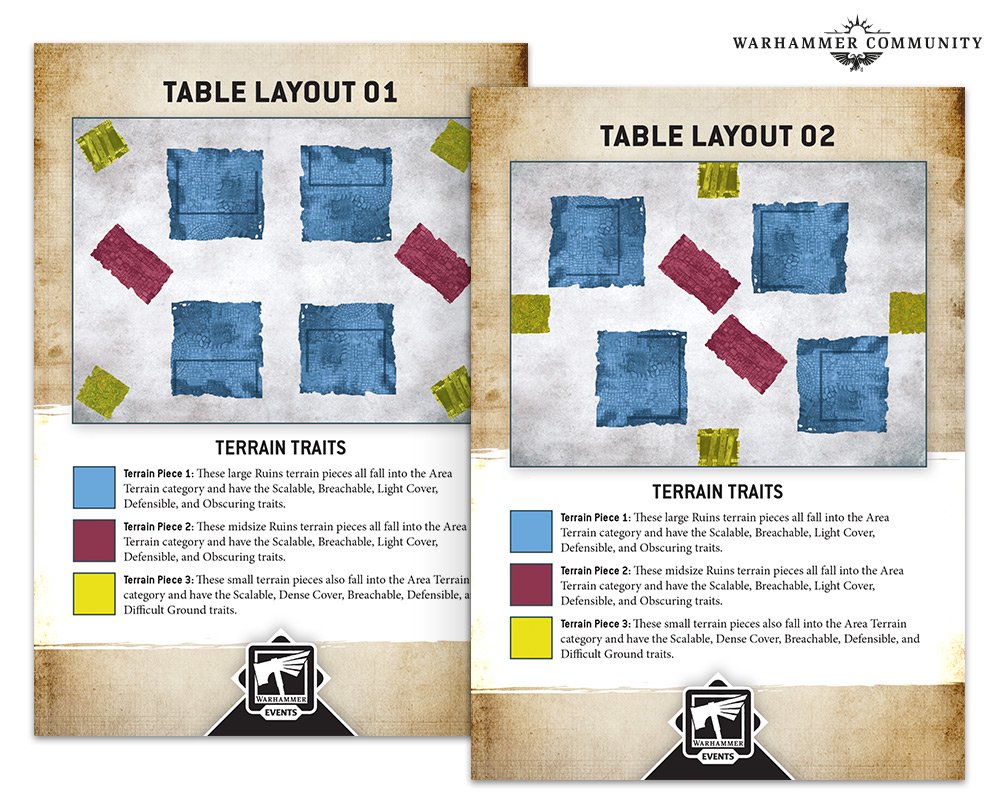
The blue pieces have a base of 12″ x 12″, the red pieces are 10″ x 5″, and the yellow pieces are 4″ x 6″. Rob was kind enough to take a picture of an example board while he was at the GW Austin Open, and you can see the footprints of each terrain piece marked out in plexiglass.
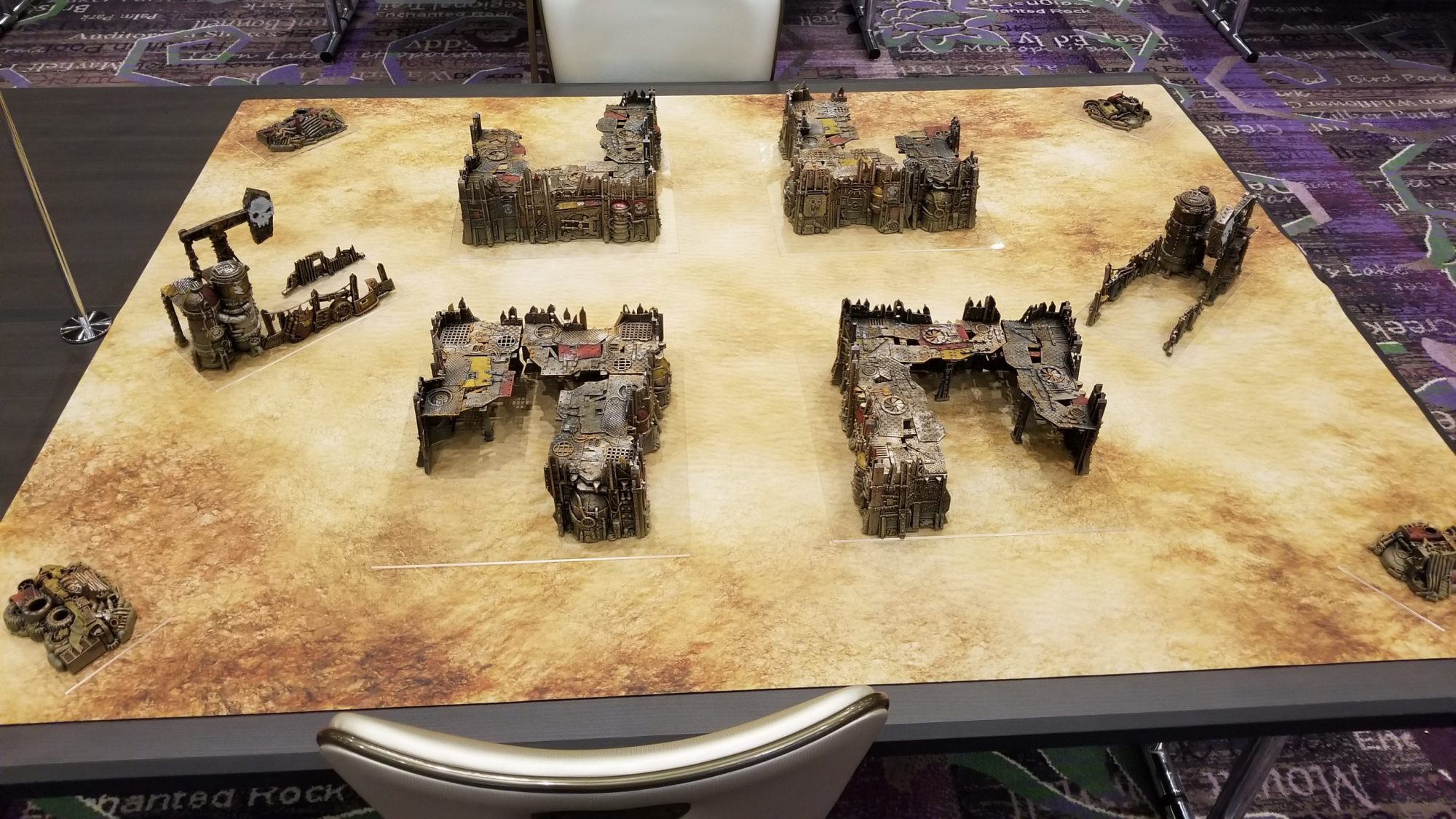
Fitting Fortifications onto the table
Using the images provided by Games Workshop and the measurements of the pieces, I took the liberty of inputting the dimensions into a CAD program and then expanded the area of each outline by 3″ to account for the exclusion zone. Once that was done I took the liberty of looking for a place where a Hammerfall Bunker could be deployed, assuming dimensions of 5.75″ x 5.75″ which were provided to me by TheBigAristotle, who is the only person I have ever seen use one in a game.
The images below are color coded. Gray represents the footprint of the terrain piece itself. Orange is the exclusion zone of 3″ away from each piece of terrain. Blue is the legal area in which a fortification can be deployed, and green is the hypothetical available space for a Hammerfall Bunker. Note that these are all notional images based on the available data, and it’s important to realize that the terrain layouts were not held to a specified level of precision. The only requirement in the packet was that the terrain layout “closely match” what was shown. What this means is that terrain pieces could easily be shifted slightly from what you see here.
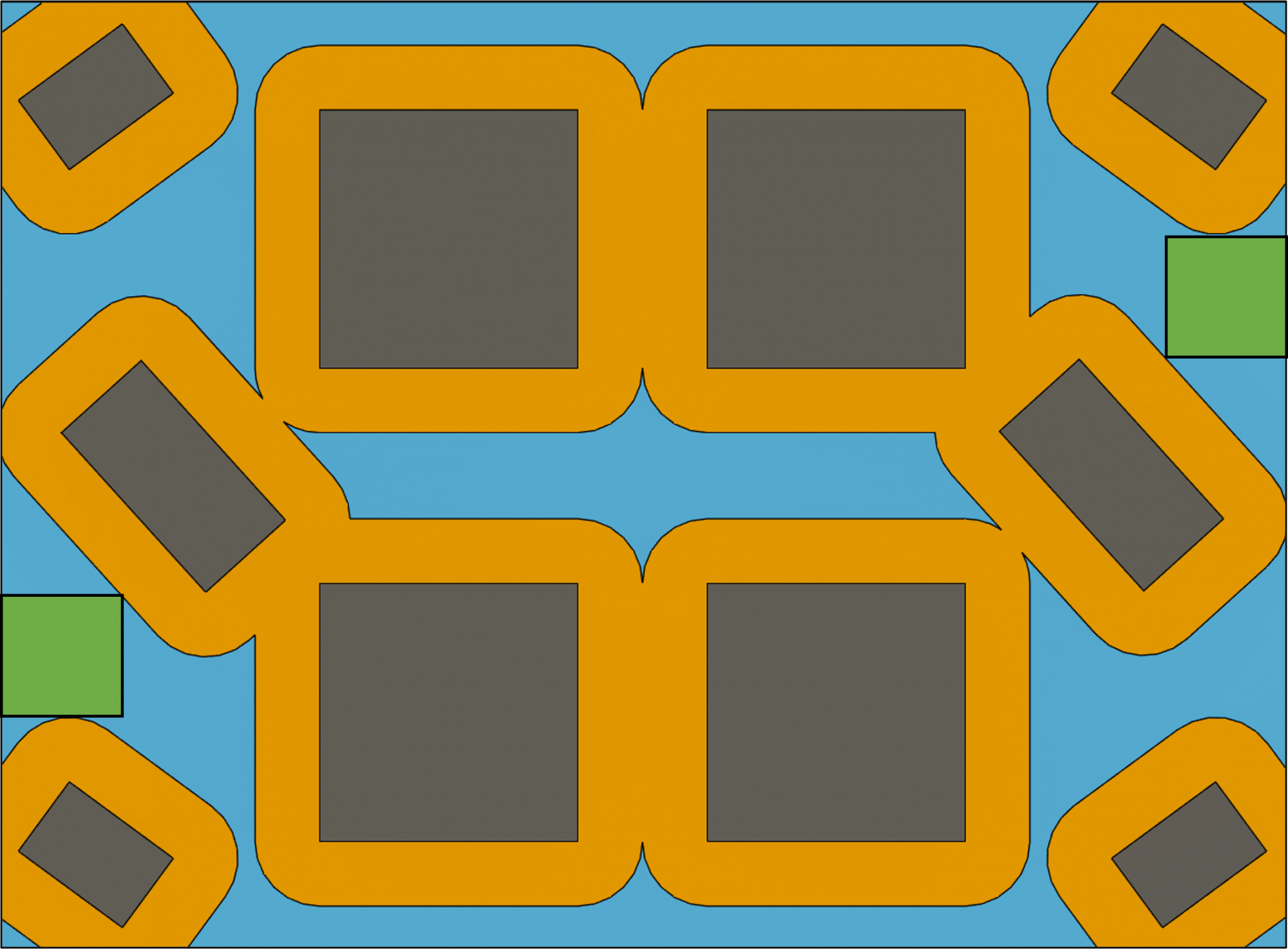
Terrain Layout 1 is pretty rough, with only 25% of the entire board available for a fortification and the vast majority in shapes which makes them useless. The exclusion zones mean that there are only two places on the entire board where a Hammerfall Bunker could be deployed, and that’s assuming that the pieces aren’t shifted a fraction of an inch too close. Anything larger simply won’t fit anywhere. Of the nine Strike Force missions in the Grand Tournament 2021 packet, three will force deployment zones that prevent any fortifications from being deployed and three others have a 50% chance of the deployment zone being in a corner with no room.
In other words for Terrain Layout 1 should you bring a Hammerfall Bunker and randomly roll for a mission you have a 50% chance of it being destroyed before you even roll a die. It’s worth noting that in the GW events this layout is only used for the Surround & Destroy, Retrieval Mission, and Scorched Earth missions. Rob: There should be room to deploy a Miasmic Malignifier in those spaces, but that’s hardly the spot you actually want to deploy one.
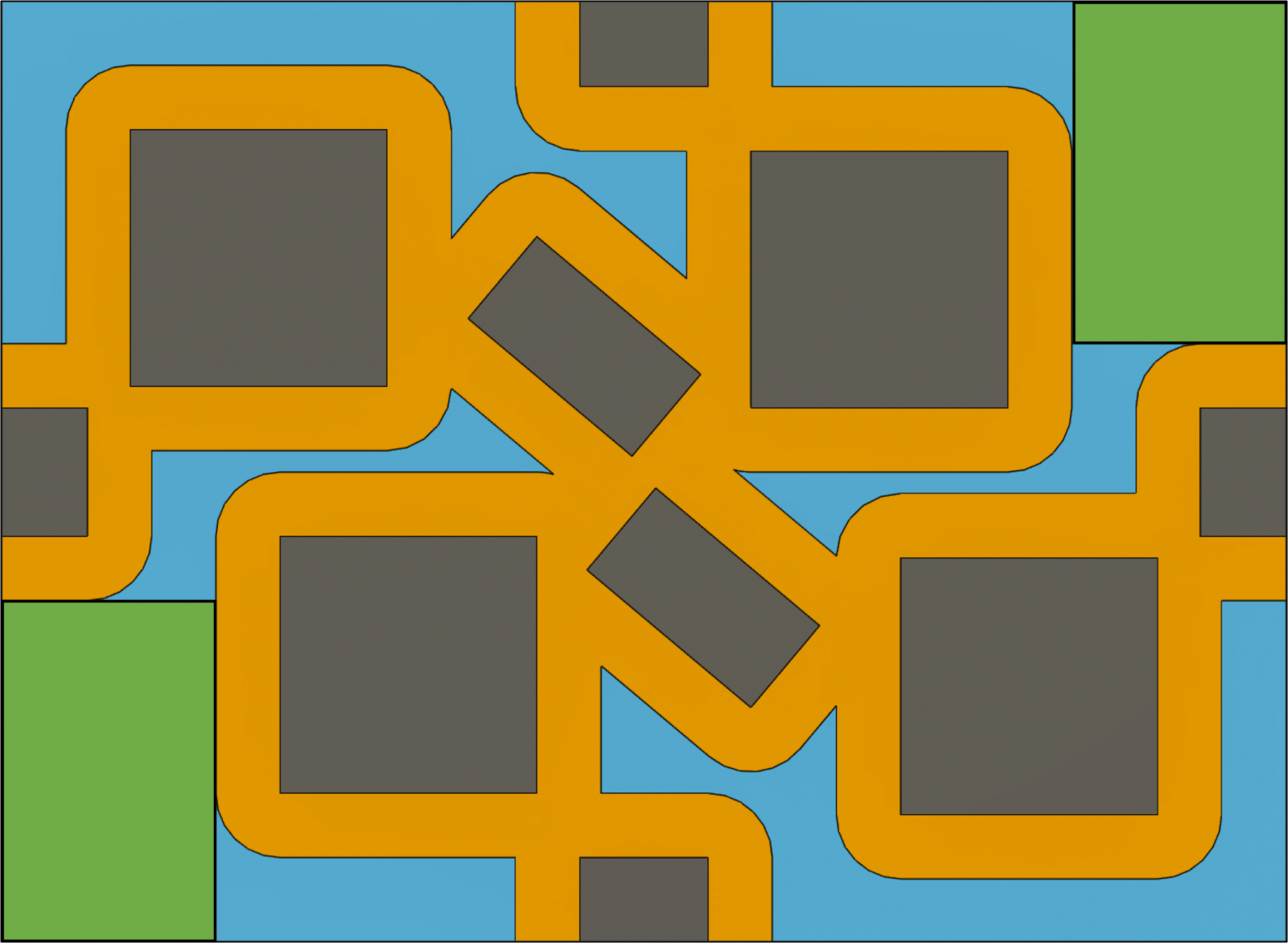
Terrain Layout 2 is a bit more forgiving, with nice corners that have a clear place for a fortification to be deployed. 32% of the surface area of the board is blue, but as with the first layout most of the area is shaped in such a way to prohibit the use of larger fortifications. The rectangles plotted here are roughly 10″ by 16″ so unfortunately a Skyshield Landing Pad won’t fit but you can definitely get a Hammerfall Bunker or an Imperial Bastion in there.
The good news is that this layout has space for a fortification in the three missions that didn’t work at all for Layout 1. The bad news is that the other three missions still have a 50% chance of the deployment zone not having any space. This is the equivalent of having to roll a D6 before deployment and destroying your fortification on a 1. Note that in GW tournaments, this layout is used for the missions Sweep and Clear, Vital Intelligence, Priority Targets, and Battle Lines, each of which will give you room to deploy your fortification.
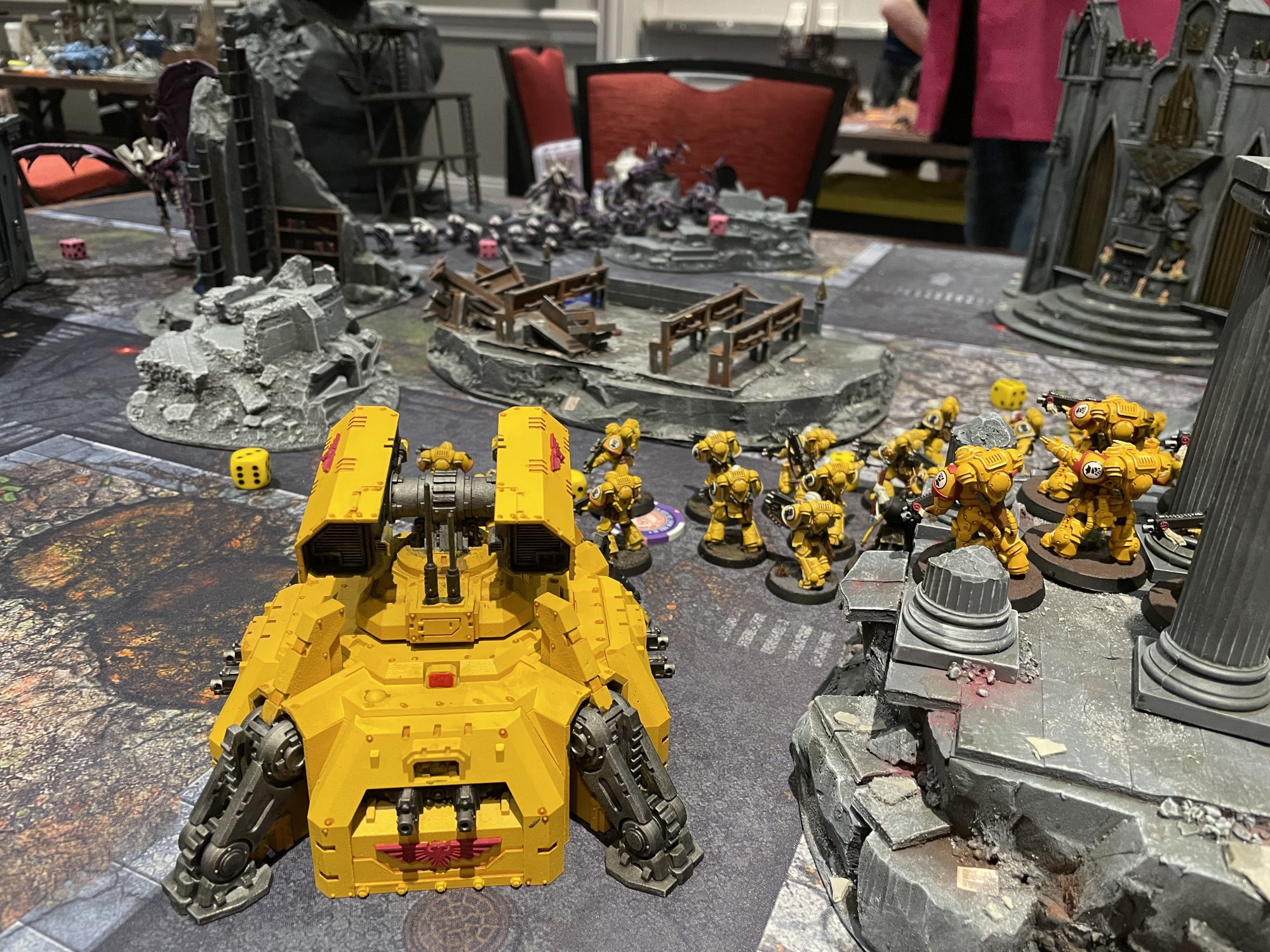
Wrapping Up
While plenty of units in Warhammer 40,000 are suboptimal at best, 9th Edition rules make it effectively impossible to actually use fortifications in most games where the terrain cannot be moved to accommodate the unit. Using Games Workshop’s own examples of what a competitive board should look like we can see how difficult it is to place something like a Hammerfall Bunker, and in the case of Terrain Layout 1 if a piece of terrain is shifted even a fraction of an inch it can leave a player with no place to deploy. This effectively forces fortifications into casual play and seriously hurts armies which include fortification-specific rules like Imperial Fists. It’s one thing for a unit to be bad in a particular format, but in my opinion every unit should at least be usable.
Thanks for reading! If you have any feedback, feel free to drop a note in the comments below or email us at contact@goonhammer.com. If you have any questions that you would like answered in a future article like this one, please submit them here.


